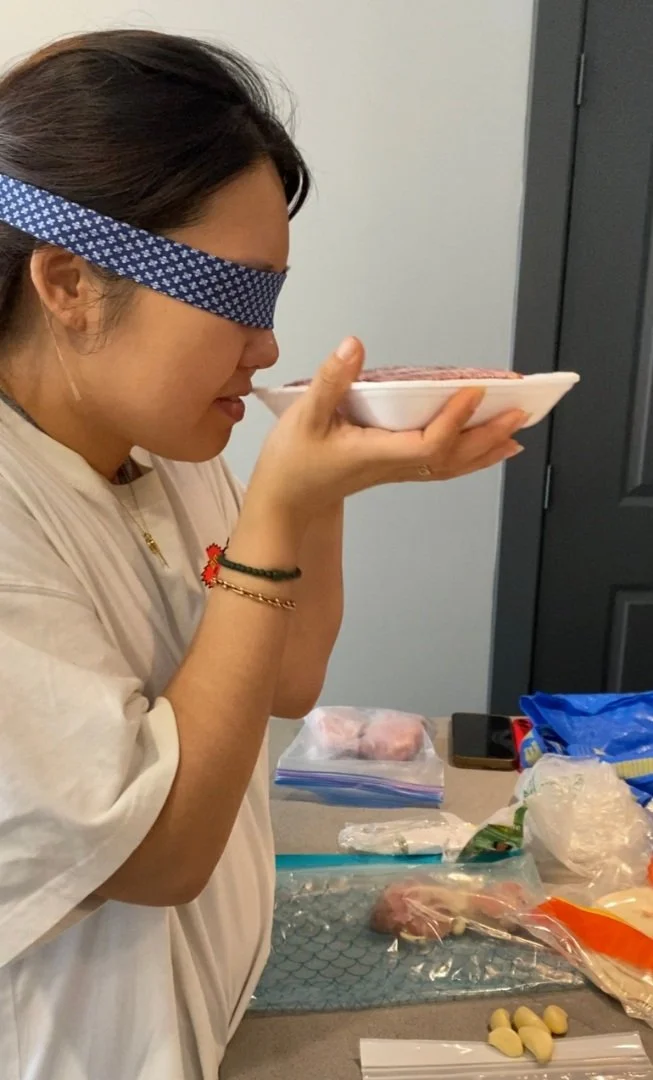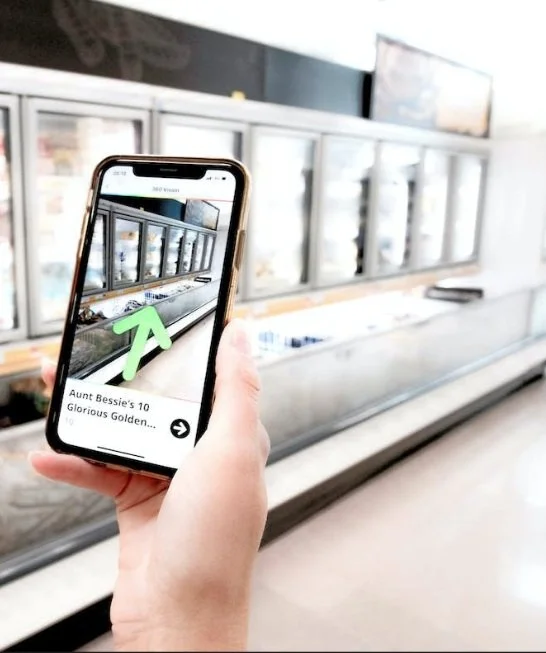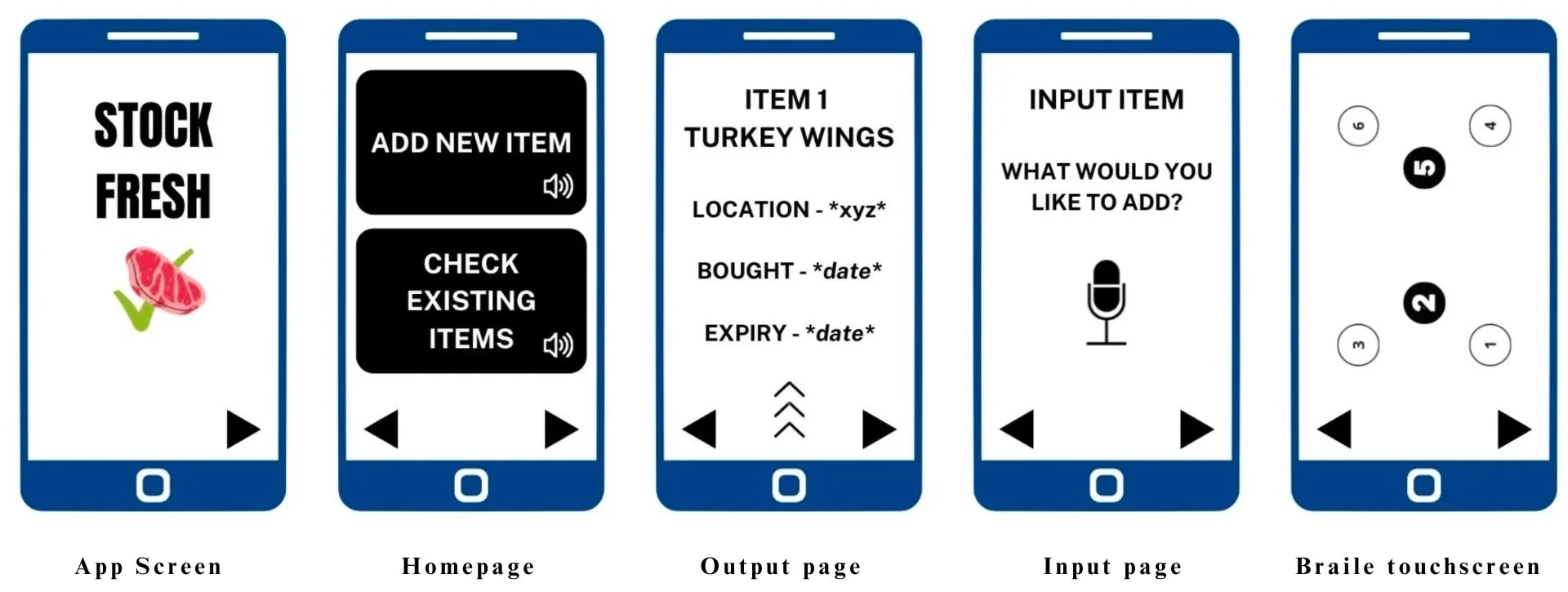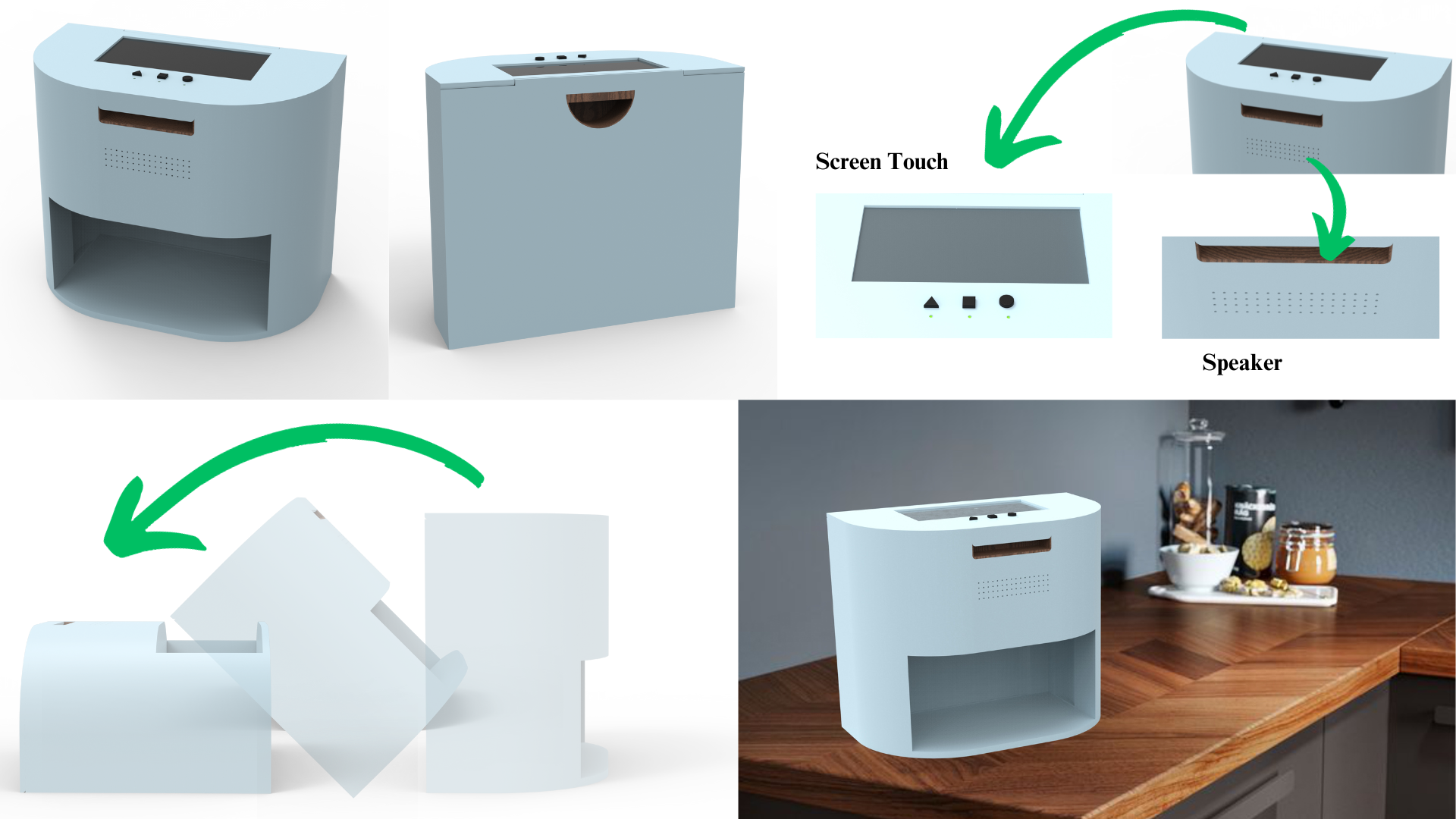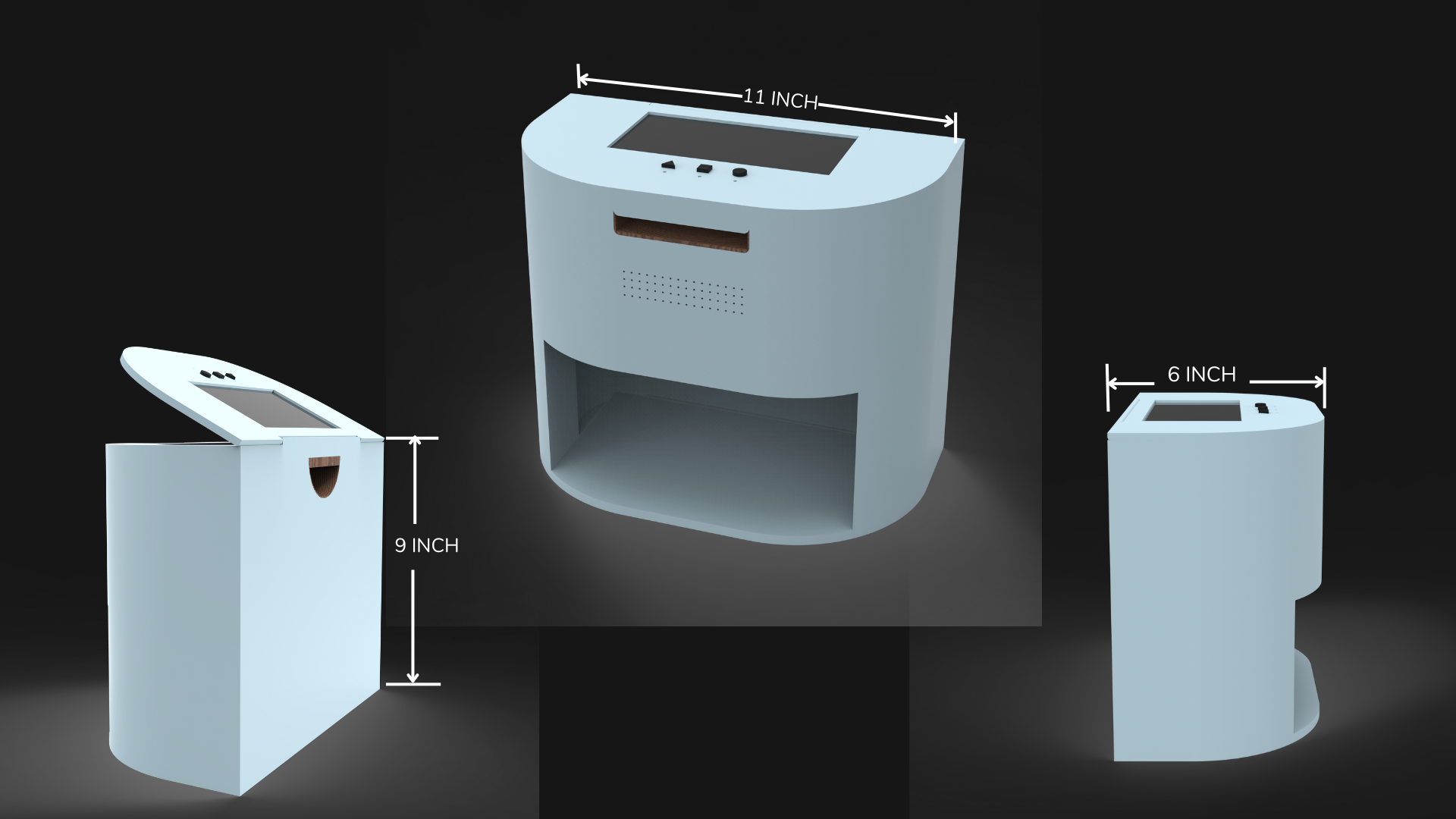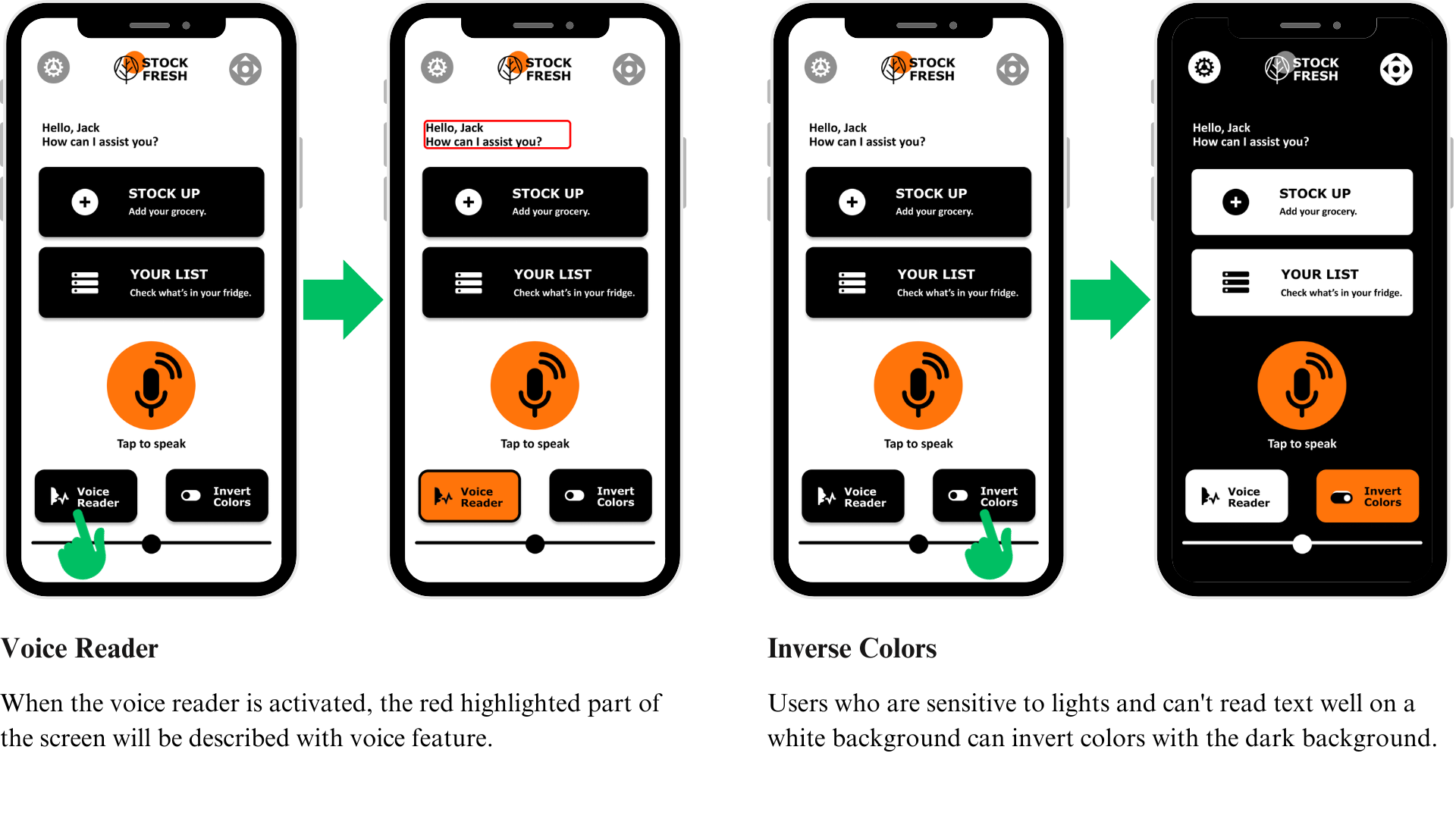Stock Fresh
Assisting visually impaired people with cooking, particularly the food preparation stage including the storage of fresh food, by designing a vacuum sealer and a mobile application.
Role
User Research, Wireframing and Prototyping
Team
Noverah Khan, Moonnyung Jo, Yifan Fan
Tools
Figma, SolidWorks, Miro, Slack
Timeline
4 Weeks
Problem Space
There are many applications and technologies designed specifically for visually impaired people to help with identifying cooking ingredients (by using barcode scanners), read-aloud and braille cookbooks, safety stoves with sensors designed to turn-off in case there’s a risk of fire etc. However, in case of checking food items for their freshness, they usually reply on their sense of touch or smell, which becomes challenging in the case of frozen foods. There are a few apps which provide online video support features through which a live agent can check the expiration on a food package and read it out for the user. But in case of foods like meat (chicken, fish, beef etc.), the users usually remove the original packaging (with the expiration date), divide the meat in different portions and store them in separate boxes or packages in their refrigerator. So, after some time when they decide to cook a portion, they no longer have the original package with the expiration date, and they cannot use their sense of smell or touch to check if the meat is fresh or stale.
Research
Our secondary research was focused on the following points:
Visually impaired people have excellent sense of smell and touch.
Cooking, recipes and food identification is not a problem for them.
Existing apps and technologies include OrCam MyEye, Braille cookbooks, Unicook Airis Stove Guard, Be My Eyes etc.
For our primary research, we conducted an experiment in which we blindfolded ourselves and we mixed different foods - both fresh and stale. The goal was to use our senses of smell and touch to identify the foods and to successfully tell the fresh and stale ones apart. Food items included yogurt, carrots, garlic, frozen meat and tortillas.
We got the following major insights through the experiment:
Unable to tell if the frozen meat was fresh or stale.
Frozen meat had no smell and touch didn’t help either as it simply felt very cold.
Consequently, we did more secondary research on frozen meat, its packaging and storage, and found the following insights:
According to USDA, meat stored at 0°F or lower will technically be safe for users to consume as long as it is stored at that temperature.
Moreover, freezer burn will cause it to taste differently and make its texture dry and leathery.
The life of meat also depends on if it's processed or not - for example raw frozen chicken can last for a year whereas cured or cooked beef hotdogs may be good for 1-2 months.
To avoid freezer burn and also increase life of frozen meat, store it in an air-tight or vacuum sealed package. Also, the items should be laid flat on each other and not stacked until they're solid.
Meat should be frozen only if it's been stored in the refrigerator below 40°F before. Also, freeze it with 1-2 days if there's no expiration date on the meat. If there is an expiration date, freeze the meat before it passes.
Existing technologies include the following:
Frozen food producer Aunt Bessie's and the Royal National Institute of Blind People introduced 'talking packaging' by using the NaviLens technology for certain products in stores. A connected smartphone app can be used to detect the unique code printed on the front of selected product packages providing audio directions to the visually impaired customers to locate the chosen product.
MIT chemists have created a small device (image on the bottom left) - it's an "inexpensive, portable sensor that can detect gases (amines) emitted by rotting meat, allowing consumers to determine whether the meat in their grocery store or refrigerator is safe to eat. Measuring the freshness of meat and fish products using this sensor can have many benefits like preventing foodborne illness, increasing overall customer satisfaction, and reducing food waste at grocery stores and in consumers’ homes."
User Journey Map
Ideation
Opportunity Space: Designing a vacuum sealer for visually impaired users to assist them by tracking the freshness of meat in the fridge and freezer.
We came up with the following initial design sketches:
Advantages of having a vacuum sealer:
Preserving frozen food longer thereby enhancing its shelf life Able to avoid the freezer burn!
Steps the user has to follow in order to use it:
Cut the bag into an appropriate size
Insert one open side end into the vacuum sealer
Seal
Put food in the bag
Insert the other open end into the vacuum sealer
Vacuum the bag and seal
Design Inspiration
Sketching Round 2
Insights from research for Accessible Interface:
Include enlarged text
Use alternate text for images
Minimalism in interfaces
Always have read aloud feature for all options and texts (with different languages included)
Use less color for information
Use black, white and any other color (e.g., grey) for the interface
Initial App Design
Final Design
The final design includes a vacuum sealer along with a mobile application.
The Vacuum Sealer
The Mobile Application
For the app interface we had to select a suitable text font and color scheme based on our secondary research.
Figma was used to create the final application interface prototypes.

